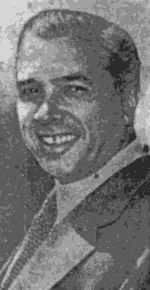Her Face for the World to See
In the era of Harold Robbins, she
wrote the book on love, mob-style. From
the mid-1950s to 1961 Liz Renay had the kind of troubles that only organized
crime could render – subpoenas, jail, abandonment, disgrace, paranoia. She had spiraled into the mob as a beautiful
showgirl dating Albert Anastasia’s reputed bodyguard Tony “Cappy” Coppola. Using him as a springboard, she bounced from
New York to Hollywood, where Mickey Cohen introduced her to the casting couch. She
leant Cohen some money and the gratuity ruined her life. After a barrage of subpoenas and a grand jury
appearance resulted in a perjury charge, a hanging judge threw her into jail
for three years. Her story’s title cried
big tears: My Face for the World to See.
Liz Renay – striptease dancer,
B-girl, gun moll – confessed with no footnotes.
It’s not a perfect way to get the history, but in firsthand accounts of
a woman’s life with the mob, it beats a blank.
The genre of not-really-true crime confessionals had been established
earlier with the publication of the Roaring Twenties madam Polly Adler’s memoir,
A House is Not a Home, the raunchy masterpiece
of ghostwriting which became a bestseller.
In this type of confession genre, there is no documentation, no tangible
facts save for what’s on public record – and fact-checkers have to look up
newspaper records and court documents to establish timelines hiding beneath the
innuendo.
Renay’s story does not resonate
historically like Polly Adler’s tale of vice in the age of Tammany. It does, however, put a personal spin on the
intense pressure that mob associates felt in the McClellan era. Renay blamed her three-year commitment on Robert
Kennedy’s vow to get Mickey Cohen. The tax
evasion case against Cohen in 1961 and ’62 swept Renay into prison on a
suspicious technicality after she’d been set free on probation on the perjury
charge. “Could Robert Kennedy be so
base that he’d smash my life...?”
For Adler and Renay, the dangers
were everywhere. The D.A. had
boiler-plated their names onto blue-backed subpoenas while the mob tailed them
to within five feet of every police station house. In an uncharacteristic way, their memoirs
detailed lurid true-crime with a tender twist.
After a meeting with New York District Attorney Frank Hogan, Renay’s
only thought is to take a warm bubble bath. Polly Adler detested the experience of the
prison shower messing up her salon-styled hair.
The editors chose to focus these molls' indignities on the trivialities of hair and makeup;
Maybelline saved their world.
Consider that Renay talked
about Albert Anastasia; Adler dished about Detroit’s Purple Gang. Their musings were not based on specific
activities but rather, gifts, proposals, manners – nothing to rival the revelations
of Joseph Valachi or Henry Hill. Neither
woman was ever coaxed into protective custody or witness protection for selling
out the secret of Cappy’s botched marriage proposal or the Purple Gang’s crass
behavior while visiting Adler’s house of prostitution.
The warnings issued to known crime
figures who have flirted with memoirs are well-known among readers of true
crime nonfiction. Those who did cross
the line to talk lived out their lives in federally sanctioned hiding
places. Yet Renay and Adler carried on
without the mob connections of their wild days.
Renay knew that after-the-fact meant just that. She left the life of a moll for a 1970’s reinvention
as a campy film star.
There are legions of historical gun
molls who, framed in their black & white photos taken in courtrooms, mob
funerals and police stations, didn’t change with time but remain frozen in
whatever era they typify. (See Reney below, on trial and accompanied by her loving daughter.)
By
turning their tawdry experiences into literary stock, Adler and Renay elevated
themselves and in doing so, escaped the mob.
It wasn’t easy. Polly Adler’s
worst John would prove to be the U.S. tax man.
Liz Renay made her image pay as an old stripper for the new age. They both found life after organized crime. More realistically, they stayed alive. (This blog is reprinted from an article originally submitted to the Las Vegas Mob Museum.)









